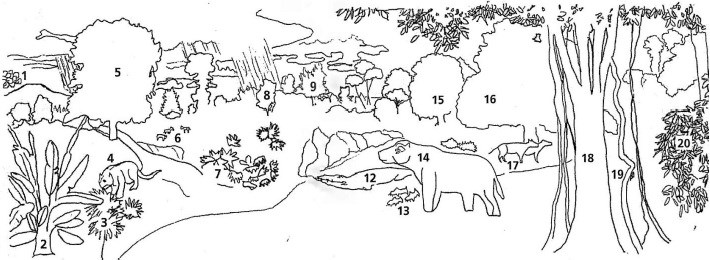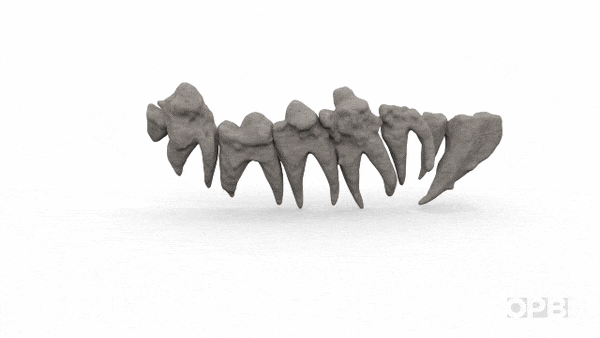|
Forty-four million years ago, central Oregon was a hot, wet, semitropical place filled with a wide diversity of plants. More than 175 species of fruits and nuts preserved in the fossil record suggest a forest more diverse than any modern ecosystem in this part of the world. It contained plants with modern relatives such as walnuts, chestnuts, oaks, bananas, magnolias, and palms. The forest was dense and moist, receiving an annual rainfall of three meters (almost 10 feet). But this semitropical environment was home to more than just trees and plants; the forest echoed with the buzzing of insects, the calls of birds, and the footfalls of mammals. Most of the mammalian organisms that thrived during this time period are only vaguely familiar to us now: creodonts – large meat-eaters similar to wolves or hyenas but related to neither; Hyrachyus – a distant relative of the tapir; and brontotheres – large rhino-like plant eaters. In addition to the mammals, reptiles such as crocodiles and tortoises lived alongside large catfish relatives. 
Dominant fossils found in this assemblage:

Scans by Selina and rendering by MacGregor Campbell/OPB, used with permission FloraThe Clarno Nut Beds flora is predominantly made up of angiosperms (flowering plants) like magnolias, walnuts, kiwi, bananas and others. The beds also contain gymnosperms (produces seeds without fruit) like Gingko sp., Yews, and more. The Nut Beds also preserve over 66 genera and 77 species of petrified woods, making it the most species rich fossil wood locality on Earth of any age.
FaunaPatriofelis ferox was a creodont, an extinct group of carnivorous mammals, similar to the size of a modern panther. Patriofelis translated from Latin means “father cat,” but this refers to superficially similar anatomy, rather than a relationship to the cat family (Felidae). It first appeared in the middle Eocene some 45 million years ago. It had short legs with broad flat feet, suggesting that it may have been a poor runner, but a better swimmer and climber. Because it belongs to an extinct family of carnivorous mammal and with no modern analogs, it is difficult to determine the locomotion style (the way it walked) of Patriofelis.
Visit our keyboard shortcuts docs for details
What makes the bananas found in the Clarno Nuts beds different from the ones you eat today? |
Last updated: January 30, 2023

